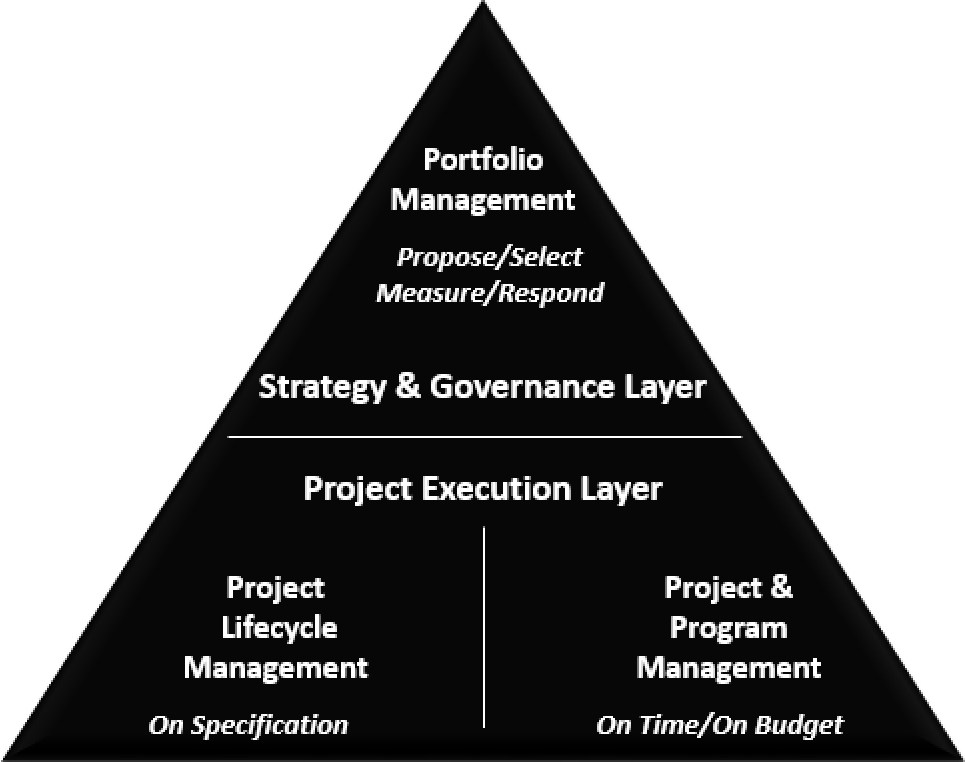There are a variety of approaches used to define a project from start to finish and break it down into phases. This post will review some alternate approaches to project lifecycles.
Project Phase Deliverables
Each project phase is marked by completion of one or more deliverables. A deliverable is a product, such as a feasibility study, a design, or a prototype. The deliverables, like the phases, are part of a logical, usually chronological, approach designed to ensure proper completion of the project’s desired product.
The conclusion of a project phase generally includes a review of both the desired deliverables and the project performance, in order to detect and correct errors as early as possible and to decide if the project should continue into its next phase. These phase- end reviews are often called phase exits, stage gates, or kill points.
Characteristics of the Project Lifecycle
The project lifecycle defines a project from beginning to end. Of course, lifecycles vary from industry to industry and even from organization to organization. For example, when an organization identifies an opportunity that it would like to look into, it will often authorize a feasibility study to decide if it should undertake the project. The project lifecycle definition will determine whether the feasibility study is treated as the first project phase or as a separate, stand-alone project.
The project lifecycle definition will also determine which transitional actions at the end of the project are included and which are not. In this manner, the project lifecycle definition can be used to link the project to the ongoing operations of the performing organization.
The phase sequence defined by most project lifecycles generally involves some form of technology transfer or handoff, such as requirements to design, construction to operations, or design to manufacturing. Deliverables from the preceding phase are usually approved before work starts on the next phase. However, a subsequent phase is sometimes begun prior to approval of the previous phase deliverables when the risks involved are deemed acceptable. This practice of overlapping phases is often called fast tracking.
Project lifecycles generally define:
- What technical work should be done in each phase (e.g., is the work of the architect part of the definition phase or part of the execution phase).
- Who should be involved in each phase (e.g., concurrent engineering requires that the implementers be involved with requirements and design).
Project lifecycle descriptions may be very general or very detailed. Highly detailed descriptions may have numerous forms, charts, and checklists to provide structure and consistency. Such detailed approaches are the project management methodologies, as we discussed earlier.
Most project lifecycle descriptions share a number of common characteristics:
- Cost and staffing levels are low at the start, higher toward the end, and drop rapidly as the project draws to a conclusion.
- The probability of successfully completing the project is lowest, and hence risk and uncertainty are highest, at the start of the project. The probability of successful completion generally increases as the project continues.
- The ability of stakeholders to influence the final characteristics of the project product and the final cost of the project is highest at the start and gets progressively lower as the project continues. A major contributor to this phenomenon is that the cost of change and error correction generally increases as the project continues.
Care should be taken to distinguish the project lifecycle from the product lifecycle. For example, a project undertaken to bring a new desktop computer to market is just one phase or stage of the product lifecycle.
Although many project lifecycles have similar phase names with similar work resources required, few are identical. Most have four or five phases, but some have nine or more. Even within a single application area, there can be significant variations—one organization’s software development lifecycle may have a single design phase while another’s has separate phases for functional and detail design.
Subprojects within projects may also have distinct project lifecycles. For example, an architectural firm hired to design a new office building is first involved in the owner’s definition phase when doing the design and then in the owner’s implementation phase when supporting the construction effort. The architect’s design project, however, will have its own series of phases from conceptual development through definition and implementation to closure. The architect may even treat designing the facility and supporting the construction as separate projects with their own distinct phases.

The preceding illustration provides a perspective of how project management fits into the environment in which projects typically occur. The three major process areas in which projects occur are:
- Portfolio management
- Project management
- Project lifecycle management
Ideally, projects are planned, selected, measured, and responded to through a portfolio management process in which the right projects are chosen against factors such as business objectives, budgets, and available resources.
Project management provides a set of business control processes that enable the project manager to deliver a project to completion on time and on budget. The project management process tends to be fairly similar in a broad variety of project types, regardless of the project lifecycle management methods that are used to deliver the project.
The deliverables of a project are conceived, designed, developed, and tested through project lifecycle management processes that typically vary widely across many different industries. These project lifecycles document the processes that ultimately become the project tasks that need to be performed to complete the project with high quality (i.e., on specification).
This covers some of the controls the internal project team has on a project. Our next post discusses some external influences from stakeholders and the organization at large.
Now that we have discussed project phases and characteristics of the project lifecycle, question is how to effectively implement these within your organization. WiserWulff is here to support your business goals, so reach out to us today to set up an appointment to discuss a strategy for your individual business needs.

Project Phases and The Project Lifecycle
There are a variety of approaches used to define a project from start to finish and break it down into phases. This post will review some alternate approaches to project lifecycles. Project Phase Deliverables...

The Project Management Process
Methodology and process are critical to delivering consistent, quality project results. This post details how to get both in place for your project operations. The Importance of Methodology to Project Management A methodology is...